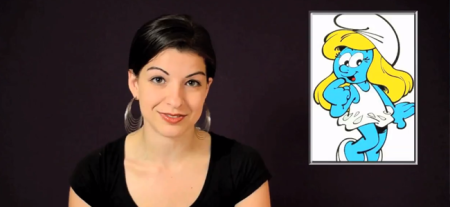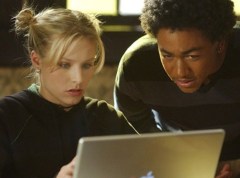
Anita Sarkeesian (Image Credit: http://www.feministfrequency.com/)
Back in October, I heard feminist media critic Anita Sarkeesian talk about what constitutes a strong female character, and it changed my life, literally, and forever changed the way I watch TV.
Sarkeesian created a web series called Feminist Frequency in which she looks at stereotypes and tropes that are often associated with women in pop culture. Usually, she talks about why these ways of simplifying women can be harmful to society as a whole. She also gives lectures at universities across the United States, which is how I met her.
At her lecture, Sarkeesian presented work she did for her thesis on female characters in mostly science fiction TV shows. She talked about what traits were valued in male characters (aggression, violence, no emotion) and how they differed from traits typically considered feminine (hysterical, innocence, helplessness). In an attempt to introduce strong female characters starting in the ‘80s, pop culture introduced the trope of the Woman Warrior, who more or less still glorifies the masculine traits but now in a female package. Examples of these characters could include Lara Croft (Tomb Raider), Starbuck (Battlestar Galactica), and Zoe (Firefly).
Sarkeesian noted that this view of gender hurts both women and men. Women are often only considered “strong” in so far as they act like men while men have to adhere to a specific idea of masculinity in order to still be considered men. Ideally, strong female characters (and male characters as well) would emphasize problem solving and teamwork over violence – such as Buffy Summers (Buffy the Vampire Slayer) and Veronica Mars (Veronica Mars).
Although I hadn’t ever considered myself a feminist, I knew that I agreed with Sarkeesian, and I could see problems in depictions of women on TV shows that I watched, including Community and Fringe. While this doesn’t hinder my enjoyment of the shows, it’s now something I analyze while watching, and I hope to help promote more balanced traits in TV characters of both genders in the future.
Sarkeesian has also spoken out against online harassment, including harassment she has received for her work on Feminist Frequency, and she doesn’t focus solely on TV but on several types of media, including advertising, books, TV shows, movies, and most recently, video games.
A few weeks ago, the in Sarkeesian’s ongoing series “Tropes vs Women in Video Games” went up on YouTube. The video looks at video games’ use of the damsel in distress trope including familiar faces such as Princess Peach and Zelda and why that’s a problematic view of women. The project, which was funded via Kickstarter, will look at several other stereotypes in later videos including “The Sexy Sidekick,” “The Sexy Villainess,” and “Unattractive Equals Evil.”
The series will feature at least twelve videos overall. The first video in the series as well as all future videos can be found on the Feminist Frequency . You can also follow Feminist Frequency on , , or for updates.




Anita Sarkeesian is ill-suited for this series as she isn’t a gamer, doesn’t research her source material properly and jumps to conclusions based on a predetermined bias. An example is how she assumes that damsels are a prize to be won in a game, without once thinking about the possibility that the main character aims to save his love interest out of genuine concern for her safety. If I was kidnapped by a big nasty brute, you damn well better believe that I’d want my boyfriend to come save me (if I was unable to save myself, of course).
On another note, her refusal to allow an open debate on her videos suggests that she’s not prepared to leave her claims open to scrutiny, which is a pretty big insult to those people who donated money to her. White knights will claim this has to do with people leaving mean and nasty comments on the video, but hey. Welcome to the Internet. Trolls will troll you no matter who you are. It has nothing to do with her being a woman.
She never said not to help anyone, that’s a straw man! That’s about the writer, not the characters. Women are way more frequently shown as helpless and getting kidnapped. It’s just outdated and boring at this point. It’s fine if both characters help each other but it isn’t represented evenly. Don’t pull the moral equivalence fallacy either.
Women get more hate comments and you don’t know how many were actually trolls. Yes there are people like that and I’ve never heard of too many guys receiving rape threats.
There’s no such thing as “acting like a man”, that’s just as ignorant. I agree with a lot of what she said, but that’s going too far. A lot of traits are traditionally considered “masculine”, but that’s an illusion. Just like empathy is NOT “feminine” at all; it’s completely neutral.